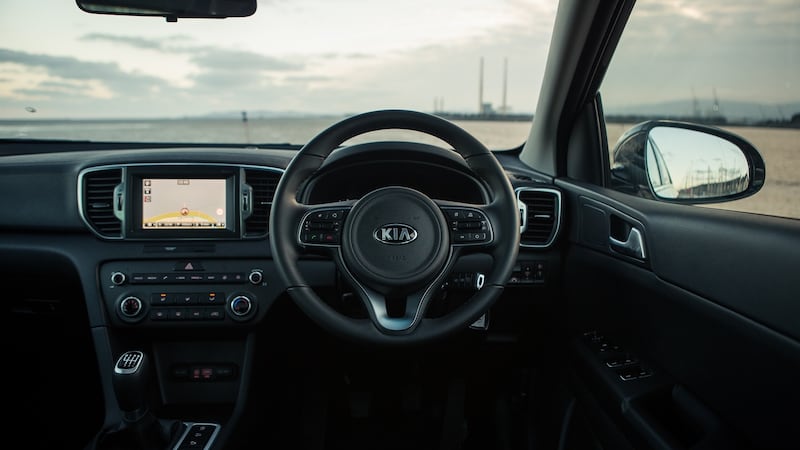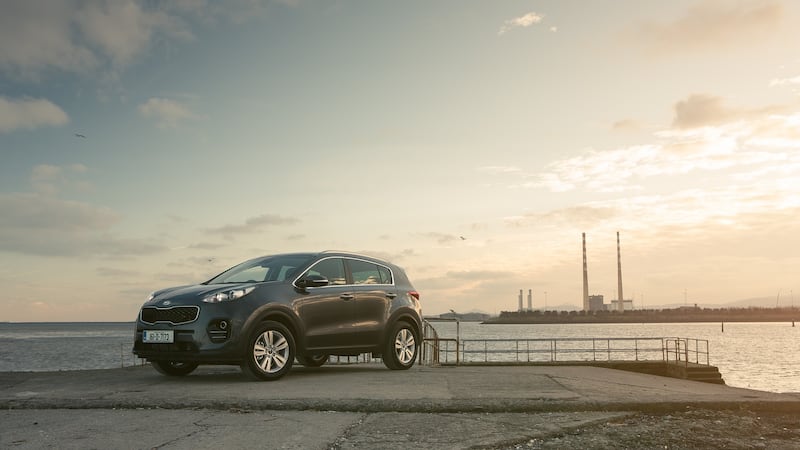The latest car sales figures gave us a glimpse of a new era in Irish motoring. Not only did we have a new name at the top of the sales league, but the best-selling car was a crossover, well ahead of the usual array of hatchbacks favoured by Irish buyers for years.
The popularity of faux SUVs shouldn’t come as a surprise. Irish buyers, like those the world over, were smitten by SUVs before the recession hit.
In particular we liked the idea of SUV looks at affordable prices. We were happy to sacrifice the off-road element and mechanics if the price was right; it was all about the image and space. The popularity of Hyundai’s Santa Fe and Kia’s Sorrento proved the point.


Then, while we dealt with the financial crisis, the car industry rolled out hatchback variants with SUV styling, now christened “crossovers”. Some brands have been caught out by the market trend, either lacking a competitive crossover – or at least an attractive one.
The Asians have the led this lucrative segment from the start, with Toyota’s RAV4 and Nissan’s Qashqai early winners before the financial crisis hit.
So with buyers back on the forecourts, the best-selling model of the January sales surge was the Hyundai Tucson. The only surprise is that several other rivals aren't parked alongside it at the top of the sales league.
The success of SUVs and crossovers has been at the heart of the Korean surge. Hyundai is currently the best-selling brand for 2016, elbowing past household names such as Toyota, Ford and Volkswagen.
Two-pronged assault
Irish car executives now talk of the "big four", with Hyundai firmly in the mix. It's a remarkable story of growth. Yet the Koreans are offering a two-pronged assault on European car sales. The second front is led by Kia, the sister brand, currently ranked in ninth place in the new car sales league.
Kia's brief is to be the more sporty, youthful and design-driven brand from the Korean duo, with the long-term goal to push Hyundai towards a quasi-premium position. If you want a comparison with established European brands then Hyundai is set to mark off the Volkswagen brand while Kia is to take on the likes of Mazda, Skoda, Seat and the French brands. For the moment, that direction is perhaps not evident, but watch this space over the next decade.
For now, the most evident difference is in styling. Kia pulled off a major coup by hiring former VW Group designer Peter Schreyer in 2006. With a portfolio that included work on the original Audi TT, he turned a one-time budget brand into a real eyecatcher. From the previous Sportage to the sleek-looking C'eed and funky Soul, Schreyer put Kia on the map. So much so that his recent promotion to head of design for both Korean brands suggests Hyundai executives weren't too happy with being upstaged by the sister brand.
Certainly they are right to be concerned. While Kia is the smaller seller on the Irish market, its Optima saloon is a better-looking car than Hyundai's version, i40, and its Cee'd hatchback makes the Hyundai equivalent look drab and dull.
The outgoing Sportage, launched in 2010, caught the eye of many buyers, even if they couldn’t afford a new car at the time. So what of the new Sportage? The new car continues Kia’s push towards greater refinement and recognition. Its styling alone makes it a strong contender, Schreyer’s team delivering the goods once more.
The new car is slightly longer than its predecessor, offering improved legroom in the back and a bigger boot. The rear boot lip is also lower, making it easier to load.
The cabin itself is smart and well-equipped in the mid-range EX specification. In contrast to European rivals Kia – and Hyundai to be fair – it has managed to get a sensible ergonomic blend of buttons and controls for its cars. The likes of Opel, Ford and the French brands should take note.
The engine of choice for Irish buyers will undoubtedly be the 1.7-litre 114bhp diesel in front-wheel drive format.
The good news is that the engine is well up to the job at hand and doesn't disappoint in terms of performance. It shows its worth against a key rival in this segment, the Nissan Qashqai 1.5-litre diesel. It could certainly be more refined, but it's only by a matter of degrees between it and its rivals.
These high-set hatchbacks are never really going to challenge for the performance market when it comes to handling, but the Sportage does a commendable job negating body roll in corners, and overall it’s an easy car to control. It’s a close-run thing, but I would lean towards the Sportage over the rival Nissan when it comes to handling.
Biggest letdown
The same cannot be said for the steering feel, which remains a personal bugbear with Kias. It’s the biggest letdown on the firm’s otherwise impressive Optima saloon, and here again the steering feel of the Sportage feels vague and numb. That’s a boon when parking and for zipping around town, but it lets the car down on the open road. And while the steering’s light feel might be welcome in town, any benefit is negated by the fact the suspension can get choppy at city speeds, something rear seat passengers commented on.
And that brings us to the all-important price. The Sportage starts at €27,995, with the EX version setting you back €29,995. It has a cloth/ leather mix, touchscreen and Sat-Nav. Our test car came with a full-length sunroof, pushing the price up to €31,095.
Arguably the best option in the range is the EX, but I wouldn’t be averse to the entry grade either, given that it comes with 16-inch rather than 17-inch wheels, which may improve the ride quality.
In comparison, the Hyundai Tucson with the same 1.7-litre diesel starts at €27,495. For another €1,000 you get to upgrade to Comfort Plus, while the closest to Kia’s Sportage EX is probably the Tucson Executive grade for €30,495. Without getting bogged down in the minutae of equipment levels, the Sportage EX boasts standard features like lane-keep assist, traffic sign recognition and automatic high beam lights not on the equivalent Tucson. On the other hand Hyundai has full leather seats. Let’s call this one a draw.
Kia will have to fight hard to lure buyers to its Sportage, yet it certainly deserves to be in the mix.
Kia, like its Korean sibling, is now a fully-fledged mainstream brand, with smart styling as its competitive edge. If its engineers sharpened up its steering systems then it would rise up my ranks. For now, the sage Irish car buyers have made it a top 10 brand, ahead of the likes of Peugeot, Mazda or Seat. And rightly so.
The lowdown: Kia Sportage
Engine: 1,685cc diesel putting out 114bhp and 280Nm of torque with six-speed manual transmission
Specification: Entry-level LX has 16-inch alloys as standard (17-inch on EX or higher grade); cruise control; front and rear foglights; LED daytime running lights; tinted glass; roof rails; reversing sensors; Bluetooth. EX grade adds 7-inch touchscreen with Sat-Nav and reversing camera; cloth and leather upholstery; all-round electric windows; lane keep assist; speed limit information.
Pricing: from €27,995









